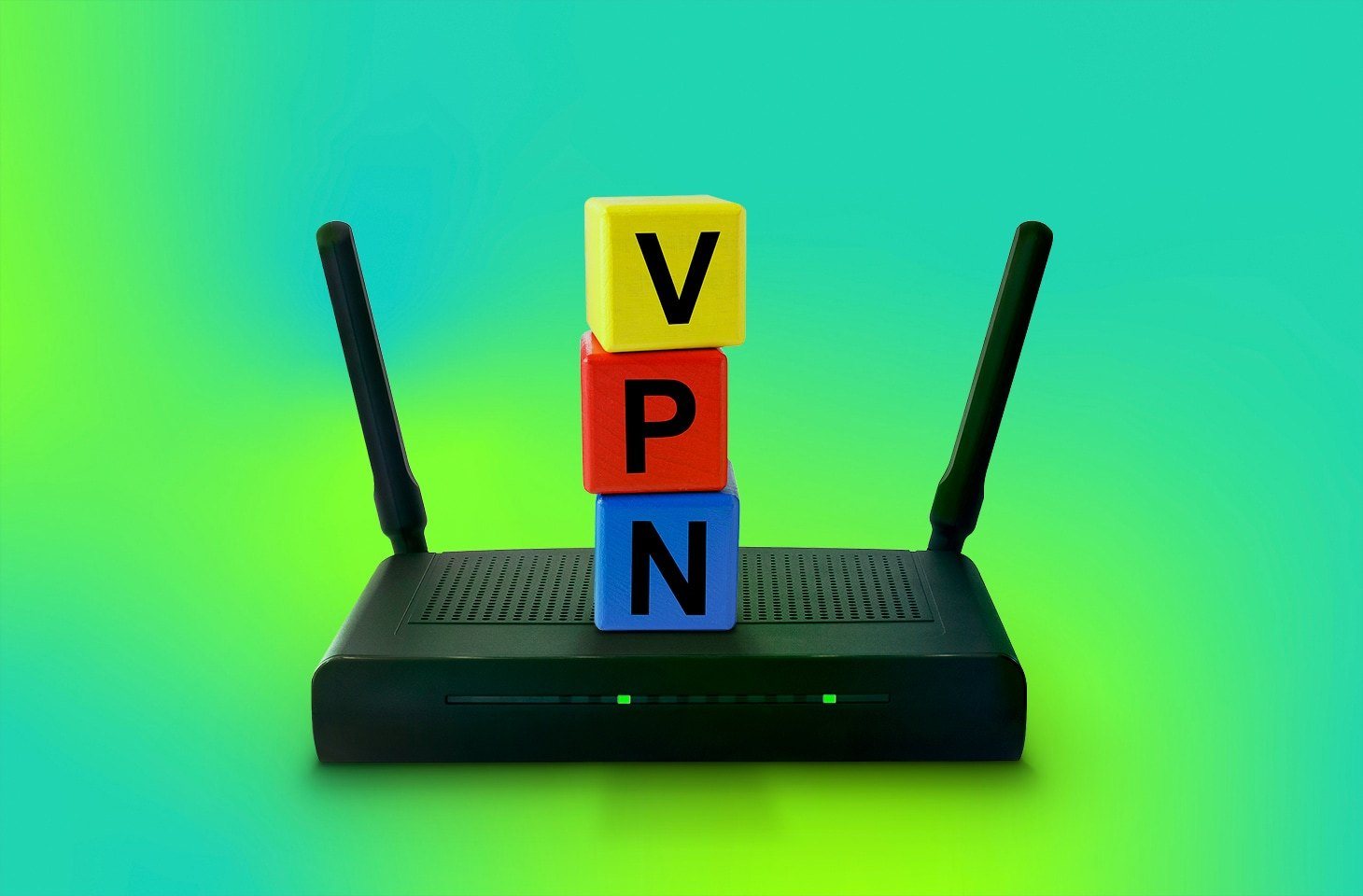Network-wide protection: How to set up a VPN on a router

Enjoy all the benefits of a VPN – not just on your smartphone, but also on your home computer, game console and smart TV. The easiest way is to enable the VPN feature on your home router.
VPNs are becoming more popular every day: better privacy, access to the content you need, and other benefits have convinced even those who are not interested in technology. To enjoy these benefits across all home devices – including computers and smartphones, gaming consoles and smart TVs – it’s best to set up a VPN directly on your router (aka “Wi-Fi box”). This way, you don’t have to waste time configuring a VPN on each device separately, and you get all the benefits even where VPN support is missing, such as a smart TV or gaming console. Interested? Let’s get started…
System requirements for the VPN
To protect your entire home network with a VPN, both your VPN and your router must support this option. The first thing to note is that most free VPNs do not offer router-level network protection. Additionally, your VPN will not run on the router if the VPN only exists in the form of a browser add-on or mobile app. If you are unsure whether your VPN supports router-based operation, read the manual or contact technical support.
It’s important to check with technical support for the details and not just give a yes/no answer. What specific VPN protocol can be used for the router (and the entire network)? Are all required VPN servers available with this protocol? With this knowledge, go to the technical support website for your router.
Also Read: Pirate Bay Proxy List
First, the router must support sending all home traffic over the VPN channel. Today, even inexpensive models have this feature, but there are still cases when a router cannot work with a VPN, especially if it is rented from an Internet Service Provider (ISP). It may also happen that the VPN is already used to create a channel from the router to the ISP and is part of the default home internet configuration. These types of “VPN services” usually don’t offer the core benefits that most users want.
You can check your router in three ways:
- Go to the web control panel (the address and password are usually displayed on the bottom of the router) and go through the available settings.
- Read the documentation on the router manufacturer’s website.
- Contact the manufacturer’s technical support or – if the router comes from your provider – their technical support.
If your ISP doesn’t offer VPN support, you should consider switching providers. If the problem is with the router itself, look for an alternative firmware with the functionality you need. The most popular are DD-WRT and OpenWRT — the links lead directly to a page where you can check your router’s compatibility. Replacing router firmware can be a technical challenge. Therefore, make sure you fully understand both the process and the risks before you begin.
After making sure the router offers VPN support, next check what specific VPN protocols it can use. The most common are OpenVPN and Wire Guard , each with its own advantages and disadvantages.
OpenVPN has been around for a long time and is widely supported by routers, but it typically doesn’t offer maximum VPN speeds and puts a lot of strain on the router’s processor. For cheap routers with a weak processor, this can affect performance and overall Wi-Fi speed in the home.
The newer WireGuard protocol is very fast and secure. If you have a very fast Internet connection, WireGuard outperforms OpenVPN in terms of speed and lower load on the router’s processor. The disadvantages include the more complex initial setup (the user has to generate a client key pair) and the fewer connection options: WireGuard binds the user to a specific server, OpenVPN to one location, so the latter allows you to switch to another server in the same location, if the one previously used is no longer available. In addition, not all routers recognize WireGuard.
And almost all routers support the older protocols L2TP/IPsec and PPTP. We do not recommend these protocols because they do not meet the latest security standards and do not encrypt traffic by default. However, if the two more modern options are not available and a VPN is still needed, it is better to use L2TP/IPsec or PPTP with traffic encryption enabled than not using a VPN.
How to enable VPN on a router
The specifics differ from provider to provider and from router to router, so we can only describe the setup in general terms.
The first step is to download the correct VPN profile from the VPN website. Since the profile is usually individual, you need to look for the VPN profiles page on the website in your personal account. This can be a list of protected devices where you can add a router, or a special Router section or a section for managing specific VPN protocols (OpenVPN, WireGuard), where you can create the desired connection profile.
For example, for [placeholder KSeC] VPN Secure Connection[/placeholder] on the My website in the Secure Connection section, you can create a router profile in three simple steps. Currently only an OpenVPN profile is offered for routers, but we plan to also provide WireGuard support by the end of 2023 (note that WireGuard is now available in our VPN for Windows).
Creating an OpenVPN profile for a router on the My website.
When you add a new profile to your personal user account, you will be required to answer certain questions. This includes the profile name, the server of your choice, etc. The same window often has space for technical details – such as private keys, names and passwords – but most providers support the automatic generation of all this information and can be left blank in this case. Next you will see a link to download the .ovpn file for OpenVPN or the .conf file for WireGuard.
For L2TP and PPTP you don’t need to download anything. Instead, you need to write down some information from your personal user account:
- Server address for the connection
- Username and password
- an additional encryption key (Pre-Shared Key, PSK, Secret Key)
- Authentication type (PAP, CHAP)
After you get this information, go to the router’s Internet Control Panel. Depending on the provider’s specifics, you may have to wade through a maze of subsections to get to the VPN features:
- Asus routers usually have a VPN → VPN Client section
- With Keenetic routers, the VPN connections are hidden under Internet → Other connections
- For Netgear routers, go to Advanced Setup → VPN Service
- In the TP-Link router , open the Network → WAN tab
Be careful, because routers can display VPN connections in two forms: as an external VPN connection to your home network (here the router acts as a VPN server and provides secure external access to your local network) and as a secure connection to a remote one -VPN Server (here the router becomes a VPN client that establishes a secure connection with the VPN service). You need the second option.
After you find the right section, create a new connection and name it (e.g. after the VPN service and/or the location of the server) and then enter the information that you have from your personal user account of the VPN provider.
For PPTP and L2TP/IPSEC, all information is required, including server addresses. For OpenVPN and WireGuard it is usually enough to attach the OVPN/CONF profile file, but sometimes you also need to provide a username and password.
On some router models (e.g. Keenetic), instead of the profile upload button, there is a window for entering the VPN configuration. In this case, open the OVPN/CONF file in a text editor (yes, it is a plain text file that you can change to .txt if necessary), copy and paste all the information into this window. If you are unsure about the correct settings, check the router setup help pages, which are usually found directly in the Settings window.
Setting up a VPN connection via OpenVPN in Keenetic routers.
Next, click the Save button and look for the Enable button or the On/Off switch for the VPN connection. After that, the VPN should theoretically always be activated and should even activate automatically after restarting the router. It’s a good idea to check this by going to a website like whatismyipaddress.com or iplocation.net on any home device: They show you which region of the online world your tunnel runs through. This essentially completes the VPN setup – all devices connected to the router will now access the Internet via an encrypted connection. Some routers even let you choose which home devices should connect directly to the Internet and which should connect via a VPN.
If your router cannot set up a VPN for some reason, you can protect your Internet access by setting up secure DNS on your router . This doesn’t give you all the benefits of a secure VPN connection, but it does give you some of them – such as protecting children from inappropriate content and blocking ads across all devices.






